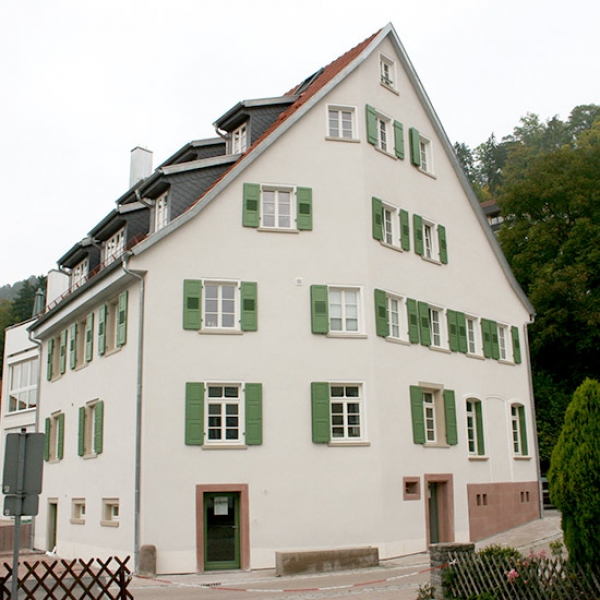Preservation of the building
When the empty house under protection as a historical monument was up for sale in 2004, members of the Association of Patrons and Friends of the Former Rexingen Synagogue decided to buy it in order to ensure its use as a memorial site and museum of the history of the rabbinate. The dilapidated building was in great danger of being torn down or of serving a purpose in no way appropriate to its historical significance.

In 2006 a Support Organization was founded. Its aim was to collect money for the purchase of the ground floor and first floor of the building and to have them renovated with the assistance of subsidies for redevelopment offered by both the town and the federal state. The building was divided as follows: on the upper three floors new modern apartments were created and were bought by friends of the Support Foundation.

Together with the State Department for the Protection of Historical Monuments the Foundation applied a discreet renovation concept by which only that which absolutely required renewal was renewed. In this way the original worn floorboards, the old walls with cracks and traces of colour and an original window could be preserved. Damage in the moulding bears witness to the insertion of walls when the then owners of the house converted the two rooms into two apartments after the defilement of the Prayer Room in 1939.

Use as Museum and Documentation Centre
The purchase of the former Prayer Room and old stable and cellar in the basement enabled the Association to document the history of Swabian rural Judaism in the region. The municipal area of Horb contains six Jewish cemeteries: Horb, Mühlen, Mühringen, Nordstetten, Dettensee and Rexingen. There were Jewish communities in all of these places, each with its own synagogue. The rabbinate district was the largest in Württemberg in the 19th century and extended from Tübingen to Rottweil. The seat of the rabbi from 1728 to 1911 was in Mühringen and was moved to Horb in 1913. The community in Mühringen had greatly decreased unlike the community in Horb which, although only dating from the mid-19th century, had grown rapidly.
Today the rooms are used for alternating exhibitions. The first entitled “The neighbours are being taken away” took place in December 2012. It depicted the deportation of Jewish families and plundering of their homes in Rexingen, Horb, Nordstetten and Mühringen. In April 2013, the exhibition “Place of Refuge and Promise: Shavei Zion” was launched.

Directly in front of Fürst-Gerbert-Straße 2 (house containing the Prayer Room) is a special place of remembrance. In 2011 the Square was officially named after the last rabbi of Horb, Dr. Abraham Schweizer, who was murdered in Treblinka in 1942.

 Deutsch
Deutsch
 English
English
